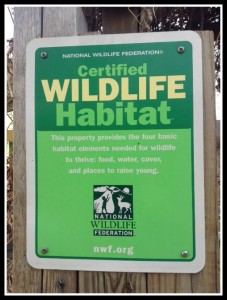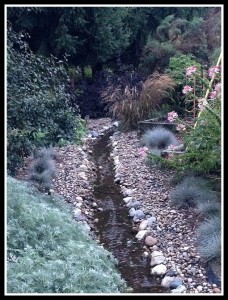Register Your Garden as a Wildlife Habitat — Like Serendipity Gardens!
May — coming soon — is Garden for Wildlife Month. It is a great month to register your garden as a Wildlife Habitat. For that month only this year, the National Wildlife Federation will plant a tree for each new certification.
It’s a double whammy, benefiting both you and the environment. Read this list to see what additional benefits will accrue to you.
It’s an easy process, too. All you do is follow these steps:
- Visit the National Wildlife Federation page (click here or on the icon on the lower right side of the Serendipity Gardens home page)
- Complete the forms to ascertain that you have certain items in your garden.
- Submit with a small fee of $20, which goes to support the Federation’s work
In a few weeks, you’ll receive a sign like this one (or you can specify and pay more for a more elegant-looking sign) that identifies your garden as a wildlife haven to those who visit. No one will come to check your garden.



